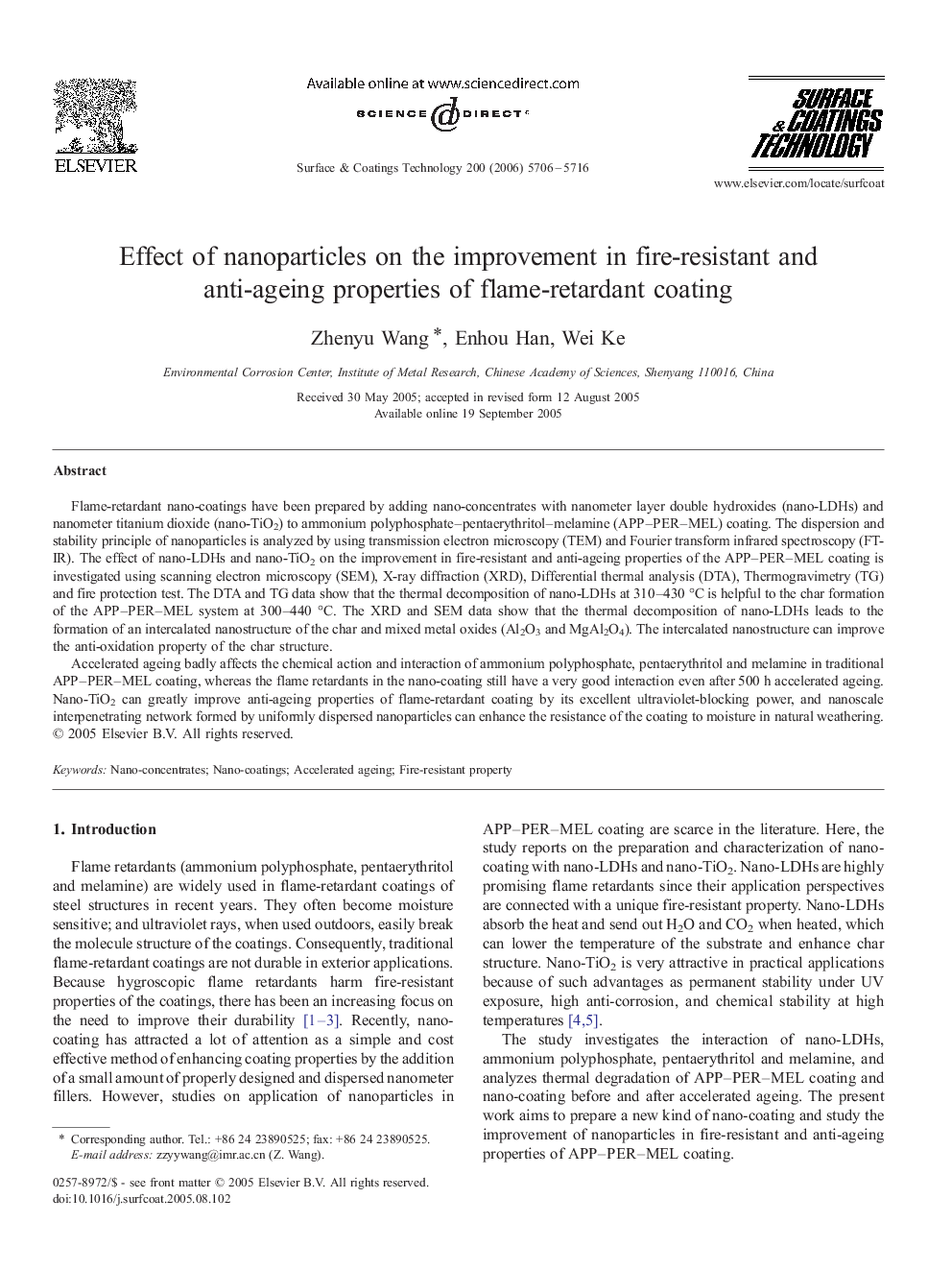| Article ID | Journal | Published Year | Pages | File Type |
|---|---|---|---|---|
| 1662184 | Surface and Coatings Technology | 2006 | 11 Pages |
Flame-retardant nano-coatings have been prepared by adding nano-concentrates with nanometer layer double hydroxides (nano-LDHs) and nanometer titanium dioxide (nano-TiO2) to ammonium polyphosphate–pentaerythritol–melamine (APP–PER–MEL) coating. The dispersion and stability principle of nanoparticles is analyzed by using transmission electron microscopy (TEM) and Fourier transform infrared spectroscopy (FT-IR). The effect of nano-LDHs and nano-TiO2 on the improvement in fire-resistant and anti-ageing properties of the APP–PER–MEL coating is investigated using scanning electron microscopy (SEM), X-ray diffraction (XRD), Differential thermal analysis (DTA), Thermogravimetry (TG) and fire protection test. The DTA and TG data show that the thermal decomposition of nano-LDHs at 310–430 °C is helpful to the char formation of the APP–PER–MEL system at 300–440 °C. The XRD and SEM data show that the thermal decomposition of nano-LDHs leads to the formation of an intercalated nanostructure of the char and mixed metal oxides (Al2O3 and MgAl2O4). The intercalated nanostructure can improve the anti-oxidation property of the char structure.Accelerated ageing badly affects the chemical action and interaction of ammonium polyphosphate, pentaerythritol and melamine in traditional APP–PER–MEL coating, whereas the flame retardants in the nano-coating still have a very good interaction even after 500 h accelerated ageing. Nano-TiO2 can greatly improve anti-ageing properties of flame-retardant coating by its excellent ultraviolet-blocking power, and nanoscale interpenetrating network formed by uniformly dispersed nanoparticles can enhance the resistance of the coating to moisture in natural weathering.
